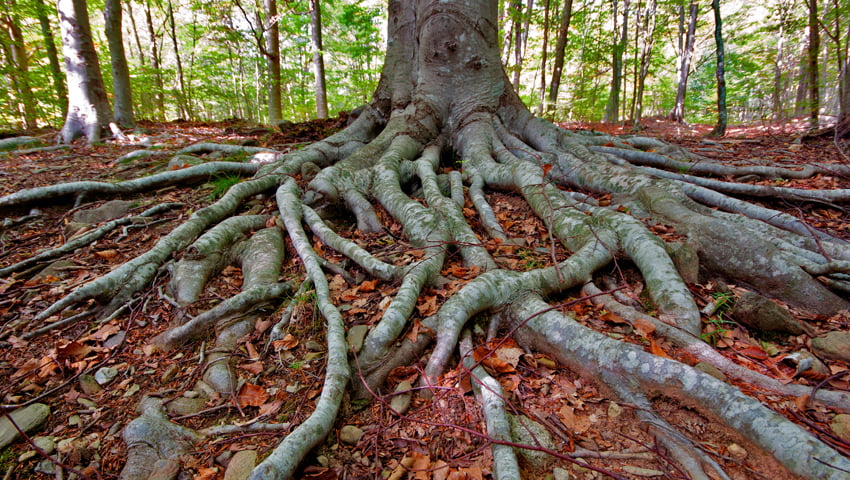This is an extract of an article written by Jessica Colarossi for Boston University’s The Brink research magazine.
Twelve years ago in a northern New Hampshire forest, Boston University biologist Pamela Templer and her team laid heating cables under the soil of maple and beech trees. Careful not to disrupt the roots, their goal was to test how climate change – and, particularly, less snow accumulation and hotter summers – might affect tree growth and the ability of this forest to store carbon. The section of land, located at the Hubbard Brook Experimental Forest, became an active laboratory.
Because trees take in and use carbon dioxide to grow, they’re one of our most important natural resources for capturing planet-warming greenhouse gases like carbon dioxide. Since laying the cables, Templer and her colleagues have returned to the outdoor laboratory multiple times a year, watching as patches of forest mimicked climate change effects that are projected to worsen in coming decades. In a new paper published in the Proceedings of the National Academy of Sciences, they show that warmer summer temperatures increase tree growth, but less snow on the ground slows this growth significantly – meaning that New England forests’ ability to store carbon in future climate scenarios is likely overestimated.
“We know from past work that there are several negative effects of lessening snowpack, and we know that temperatures are warming and the snowpack is shrinking,” says Templer, a College of Arts & Sciences Distinguished Professor and chair of biology. “We wanted to look at the interactions between climate change across the year, and we wanted to be as realistic as possible about the future climate our forests will experience.”
We typically think of snow making the ground colder, but for the forest floor, the opposite is true. Snow acts as a blanket—the more snow, the more insulated the soil and root systems remain throughout the winter. If there’s less snow on the ground and the air is below freezing, the soil will freeze, then thaw as snow accumulates, then freeze again as it melts, then thaw again as the season goes on. At the same time, warmer summer temperatures are expected to increase the rate of tree growth due to heat speeding up decomposition in the soil. To see how these shifts ultimately balance out, Templer and her team studied what happens to trees as the seasons change.
The experimental forest consists of six plots, each one measuring 36 by 44 feet. In four of the plots, underground cables warm the soil by 5 degrees Celsius (9 degrees Fahrenheit), and two of those plots have a portion of snow removed in the winter to induce the freeze-thaw cycle. (The two remaining plots are left unaltered.) Conrad-Rooney and other lab members visited each section multiple times a year to check the electrical components and measure the trees’ dendrometer bands—spring-loaded metal bands that wrap around a tree’s trunk to measure growth. They are then able to use those measurements to calculate the total biomass of the tree and how much carbon is stored in the trunk.
